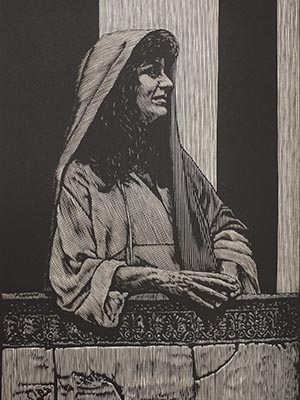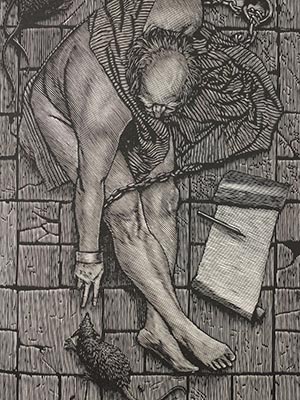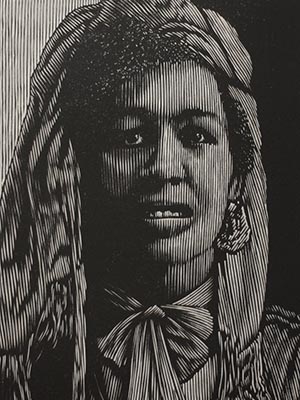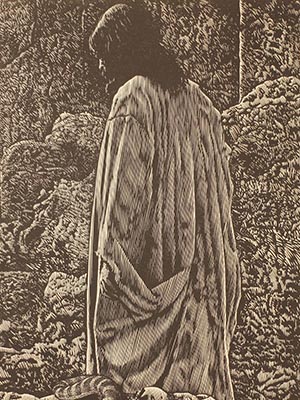Pennyroyal Caxton Bible
February 5, 2014
Description by David M. Harris, Archives and Special Collections Assistant and MA student in Near Eastern and Judaic Studies, specializing in Bible and the Ancient Near East
 Living as we do in our modern, 21st-century world with all of its attendant gadgets and technology, it is fairly easy to go through life with little appreciation of the impact that the printing press has had on the history of the world. And in many respects, the history of book printing could be told as a history of printing Bibles. While not the very first work of printing, the Bible (an edition of the Latin“Vulgata”) was the first significant work to be published by moveable type—in the 1450s, and likely completed by 1455—and Bibles have been a staple of presses ever since. Even today, new printings and translations of the Bible are being produced, and many modern Bibles, like their ancient counterparts, are adorned with photographs or lavish illustrations[1]. If you have not been to the Brandeis University Archives and Special Collections Department in a while (or ever), you are missing out. Among its many collections of rare books, manuscripts and ephemera is a breath-taking example of a modern printed and illustrated Bible: The Pennyroyal Caxton Bible, a gift to Brandeis by Bruce and Suzie Kovner.
Living as we do in our modern, 21st-century world with all of its attendant gadgets and technology, it is fairly easy to go through life with little appreciation of the impact that the printing press has had on the history of the world. And in many respects, the history of book printing could be told as a history of printing Bibles. While not the very first work of printing, the Bible (an edition of the Latin“Vulgata”) was the first significant work to be published by moveable type—in the 1450s, and likely completed by 1455—and Bibles have been a staple of presses ever since. Even today, new printings and translations of the Bible are being produced, and many modern Bibles, like their ancient counterparts, are adorned with photographs or lavish illustrations[1]. If you have not been to the Brandeis University Archives and Special Collections Department in a while (or ever), you are missing out. Among its many collections of rare books, manuscripts and ephemera is a breath-taking example of a modern printed and illustrated Bible: The Pennyroyal Caxton Bible, a gift to Brandeis by Bruce and Suzie Kovner.
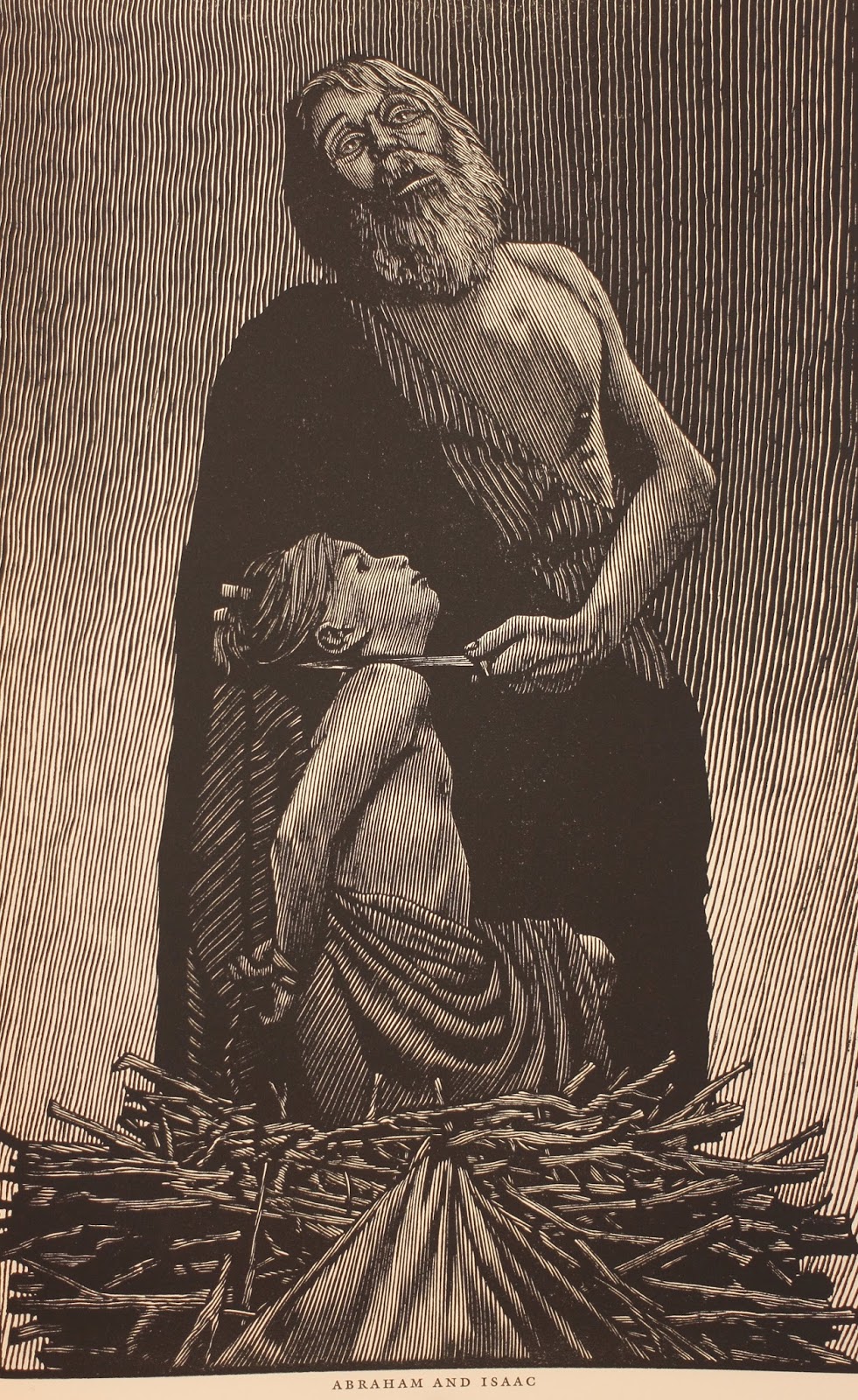 Published in the second half of 1999, the Pennyroyal Caxton Bible is a limited edition printing of the King James Bible. No other translation of the Bible has held the pride of place in the hearts and minds of the English-speaking world as the King James (Authorized) Version of the Bible (originally published in 1611). Thus, the King James Version, following Scrivener’s 1873 edition of that translation—which eliminated words in italics (which were not present in the original Hebrew) and verse numbering—was used as the text of the Pennyroyal Caxton. The layout makes for a very pleasant and fluid reading. Further, the Pennyroyal Caxton Bible has been masterfully illustrated by Barry Moser. Mr. Moser, who has taught at a dozen colleges and universities, including Rhode Island School of Design (RISD) and Princeton University, is the foremost American master of wood engravings. The Pennyroyal Caxton Bible has been adorned with 233 of these engravings, the sum of which it took Moser three and a half years' worth of ten- to twelve-hour days to create. All of this time-consuming labor was well worth it; the illustrations are exquisite in their execution and comprehensive in their scope. Apart from the smaller New Testament epistles, every book of both the Hebrew Bible/Old Testament and the New Testament contains illustration. No other printed Bible of the 20th-century holds this distinction, and no other Bible has approached either the number or the artistry of wood engravings since Gustave Doré’s Le Sainte Bible of 1865 (a copy of which we also hold in our collections).
Published in the second half of 1999, the Pennyroyal Caxton Bible is a limited edition printing of the King James Bible. No other translation of the Bible has held the pride of place in the hearts and minds of the English-speaking world as the King James (Authorized) Version of the Bible (originally published in 1611). Thus, the King James Version, following Scrivener’s 1873 edition of that translation—which eliminated words in italics (which were not present in the original Hebrew) and verse numbering—was used as the text of the Pennyroyal Caxton. The layout makes for a very pleasant and fluid reading. Further, the Pennyroyal Caxton Bible has been masterfully illustrated by Barry Moser. Mr. Moser, who has taught at a dozen colleges and universities, including Rhode Island School of Design (RISD) and Princeton University, is the foremost American master of wood engravings. The Pennyroyal Caxton Bible has been adorned with 233 of these engravings, the sum of which it took Moser three and a half years' worth of ten- to twelve-hour days to create. All of this time-consuming labor was well worth it; the illustrations are exquisite in their execution and comprehensive in their scope. Apart from the smaller New Testament epistles, every book of both the Hebrew Bible/Old Testament and the New Testament contains illustration. No other printed Bible of the 20th-century holds this distinction, and no other Bible has approached either the number or the artistry of wood engravings since Gustave Doré’s Le Sainte Bible of 1865 (a copy of which we also hold in our collections).
 The Pennyroyal Caxton Bible has been printed in two editions. It is the first run, the Primary Edition, that Brandeis holds. The Primary Edition is printed in two volumes, with full vellum bindings. Volume 1 contains The Books of Moses (Genesis–Deuteronomy) and The Books of History (Samuel, Kings, Chronicles, Ezra-Nehemiah, Esther, Job, Psalms, Proverbs, Ecclesiastes and The Song of Songs). Volume Two contains The Books of Prophecy and the entire New Testament. The Primary Edition has been strictly limited to 400 copies.
The Pennyroyal Caxton Bible has been printed in two editions. It is the first run, the Primary Edition, that Brandeis holds. The Primary Edition is printed in two volumes, with full vellum bindings. Volume 1 contains The Books of Moses (Genesis–Deuteronomy) and The Books of History (Samuel, Kings, Chronicles, Ezra-Nehemiah, Esther, Job, Psalms, Proverbs, Ecclesiastes and The Song of Songs). Volume Two contains The Books of Prophecy and the entire New Testament. The Primary Edition has been strictly limited to 400 copies.
This Bible itself is more than a book to behold; it is a work of art. Each volume measures 16 x 11 1/2 inches, and is approximately 3 inches thick. They have a certain heft to them that many bibliophiles love to encounter in a book: the heft that suggests quality and craftsmanship. The titles are stamped in 24-carat gold on the front cover and spine, and the signatures[2] as well as the head and tail bands[3] were sewn by hand. Completed here in Massachusetts, these bindings are meant to recall the bookmaking and binding traditions of the Renaissance. For those interested in scripts, calligraphy or typography, the typesets are Galliard and Mantinia, both designed locally in Cambridge. Created especially for this project, they are retrofits of types created by the 15th-century Italian painter Andrea Mantegna (1431-1506) and the 16th-century French type designer and printer Robert Granjon (1513–1589/90). In addition, a new Hebrew typeface was commissioned, Le Bé Hebrew, which made its debut in the Pennyroyal Caxton Bible. Each Testament of the Bible opens with a specially designed rubric,[4] and the New Testament in like manner closes with a beautiful red “Amen.” Even the paper is distinctive: called Zerkal Bible, it is white vellum sheets, each measuring 22 x 32 inches and weighing 120 grams (which accounts for the heft). The paper was manufactured in Zerkal, Germany, and bears a distinctive watermark on each page. Some of the copies of this Bible contains paper that was made entirely by hand!
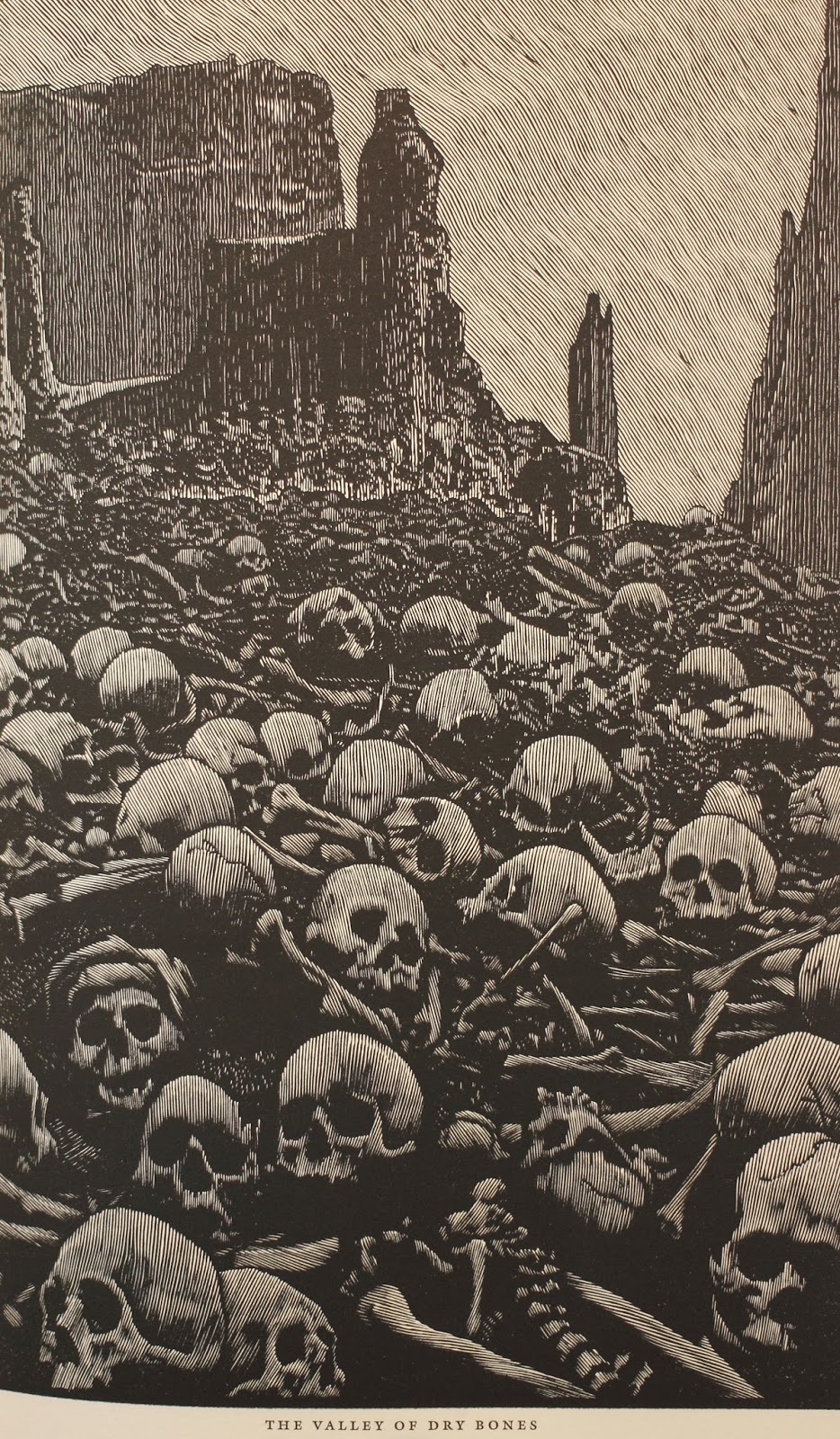 The crowning jewel of the Pennyroyal Caxton Bible is its illustrations. There was no major publication of the Bible in the entire 20th-century for which both the Old and the New Testaments were illustrated by the same artist. In this way, The Pennyroyal Caxton Bible is unique, and turning through the pages of this Bible one cannot help but be struck with the sense that each illustration is more impressive than the last. It is replete with images of not only major Biblical figures (Abram/Abraham, Moses, Saul, etc.) but many “minor” ones as well: there is a beautiful illustration of Hannah suckling Samuel, a gripping depiction of Simon the Cyrene, and an image of Jephthah’s daughter that is so striking in its beauty and simplicity that it begs one to reconsider the significance of the chilling story that we find in Judges 11. Women—even the least known among Biblical women, for example, Achsah (Josh 15 and Judges 1) and Lydia (Acts 16)—are fittingly well-represented, and in beautiful detail. Adding to its distinctiveness, this Bible is full of illustrations of livestock, fauna and assorted sundries of everyday life in the ancient world. The illustrations are beautiful in their artistry, in their capacity to bring life to the Biblical stories, and in the ideas and lessons that they convey to their viewers, confronting and challenging as they beckon and inform.
The crowning jewel of the Pennyroyal Caxton Bible is its illustrations. There was no major publication of the Bible in the entire 20th-century for which both the Old and the New Testaments were illustrated by the same artist. In this way, The Pennyroyal Caxton Bible is unique, and turning through the pages of this Bible one cannot help but be struck with the sense that each illustration is more impressive than the last. It is replete with images of not only major Biblical figures (Abram/Abraham, Moses, Saul, etc.) but many “minor” ones as well: there is a beautiful illustration of Hannah suckling Samuel, a gripping depiction of Simon the Cyrene, and an image of Jephthah’s daughter that is so striking in its beauty and simplicity that it begs one to reconsider the significance of the chilling story that we find in Judges 11. Women—even the least known among Biblical women, for example, Achsah (Josh 15 and Judges 1) and Lydia (Acts 16)—are fittingly well-represented, and in beautiful detail. Adding to its distinctiveness, this Bible is full of illustrations of livestock, fauna and assorted sundries of everyday life in the ancient world. The illustrations are beautiful in their artistry, in their capacity to bring life to the Biblical stories, and in the ideas and lessons that they convey to their viewers, confronting and challenging as they beckon and inform.
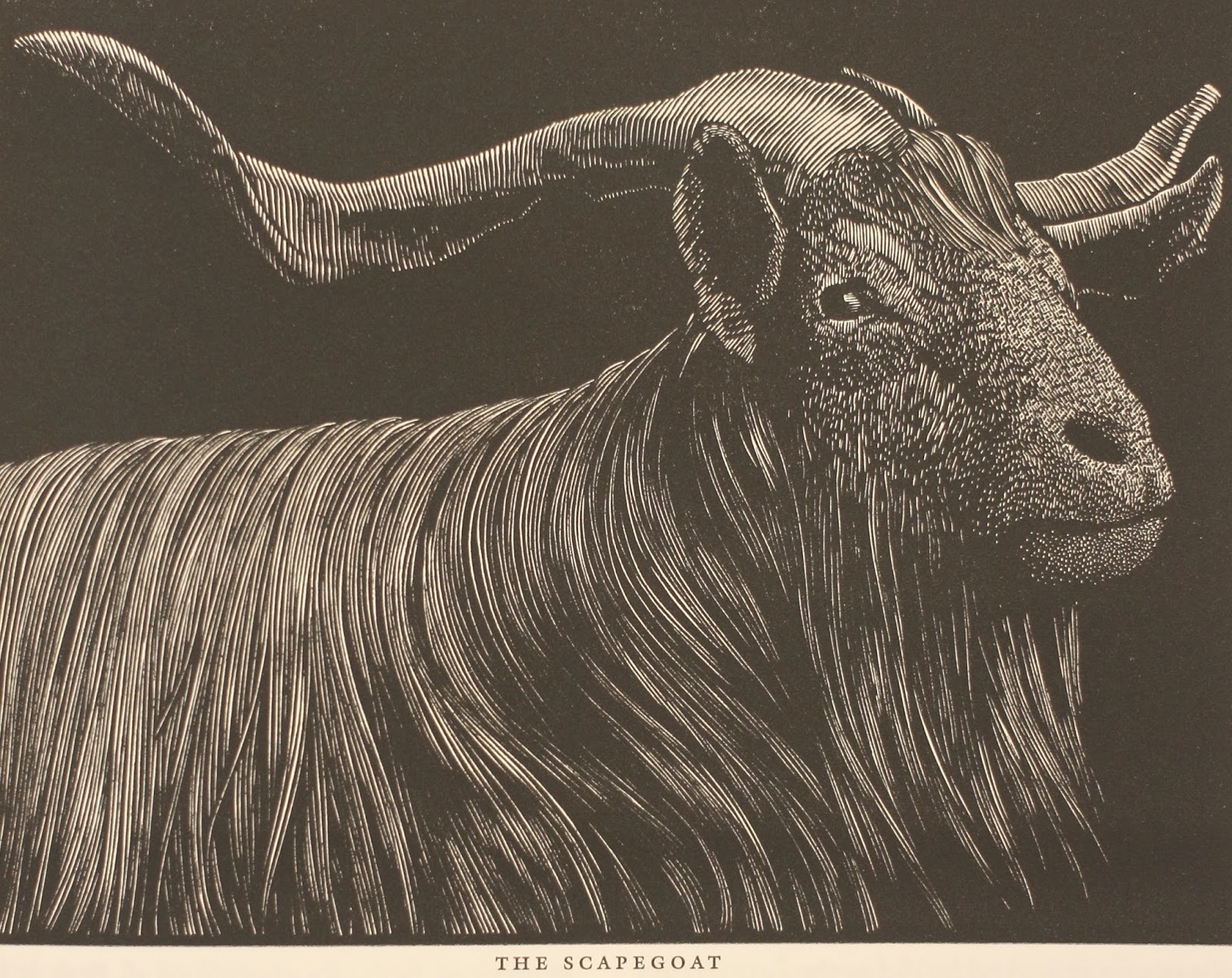 The Pennyroyal Caxton Bible is a singular achievement, in printing and in Biblical illustration. It is a rare work of art, and one that deserves to be appreciated for its artistic, religious, cultural and reverential value. So contact the Archives and Special Collections Department and ask the librarian to show it to you; you will be glad that you did.
The Pennyroyal Caxton Bible is a singular achievement, in printing and in Biblical illustration. It is a rare work of art, and one that deserves to be appreciated for its artistic, religious, cultural and reverential value. So contact the Archives and Special Collections Department and ask the librarian to show it to you; you will be glad that you did.
Notes
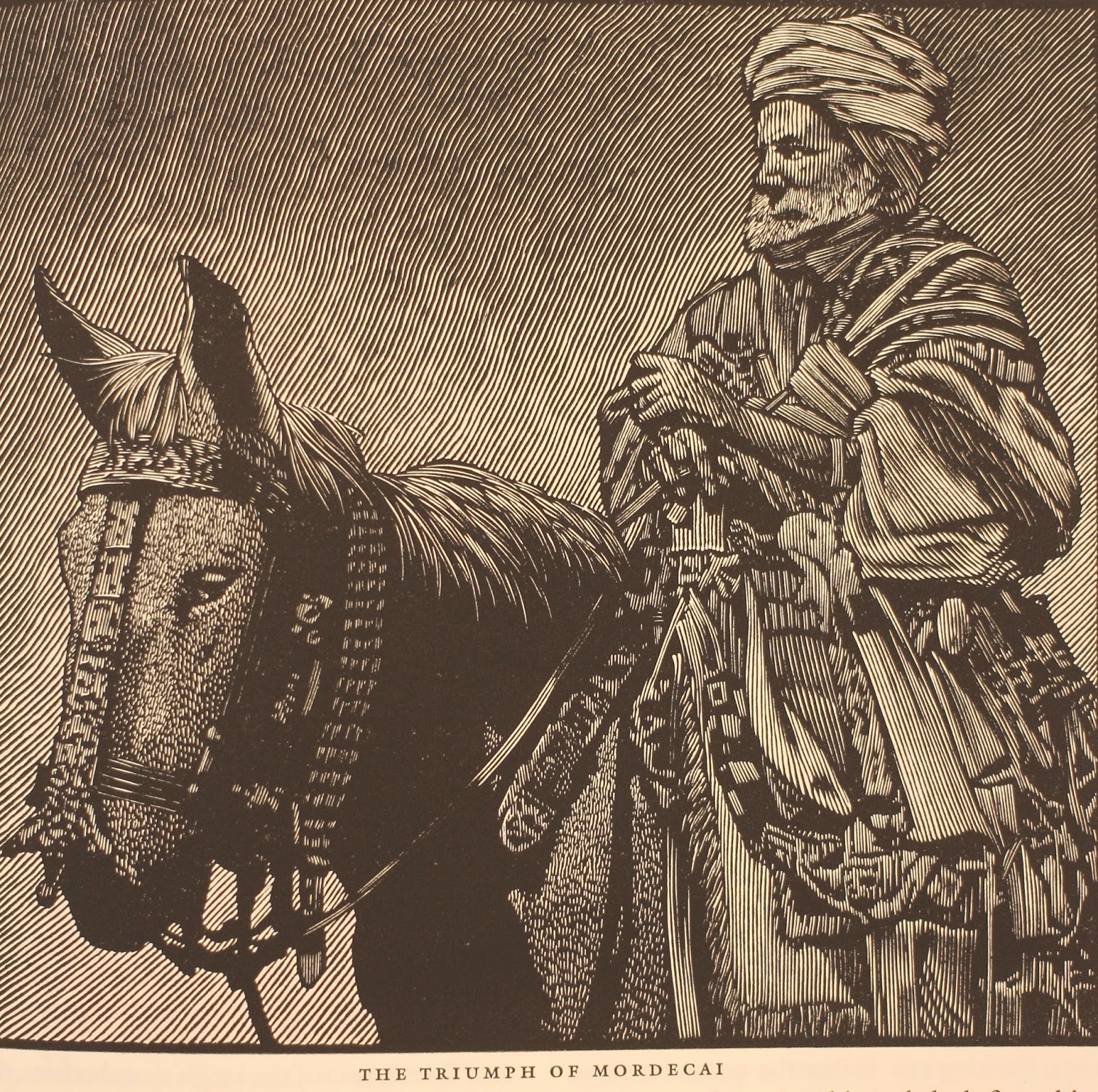 For an overview of medieval manuscripts and how they were produced and illustrated, see Jonathan J.G. Alexander,“Medieval Illuminators and Their Methods of Work” (New Haven, CT.: Yale University Press, 1992). For an introduction to the history of manuscripts and their illustration, see the excellent work by Christopher De Hamel,“A History of Illuminated Manuscripts” (Boston: David R. Godnine, 1986).
For an overview of medieval manuscripts and how they were produced and illustrated, see Jonathan J.G. Alexander,“Medieval Illuminators and Their Methods of Work” (New Haven, CT.: Yale University Press, 1992). For an introduction to the history of manuscripts and their illustration, see the excellent work by Christopher De Hamel,“A History of Illuminated Manuscripts” (Boston: David R. Godnine, 1986).- A “signature” is the letters or numbers printed in the tail margin of each gathering or section of a book, in order to guide the binder in assembling them correctly. See John Carter and Nicholas Barker,“ABC for Book Collectors,” Eighth Edition, New Castle, DE: Oak Knoll Press, 2006.
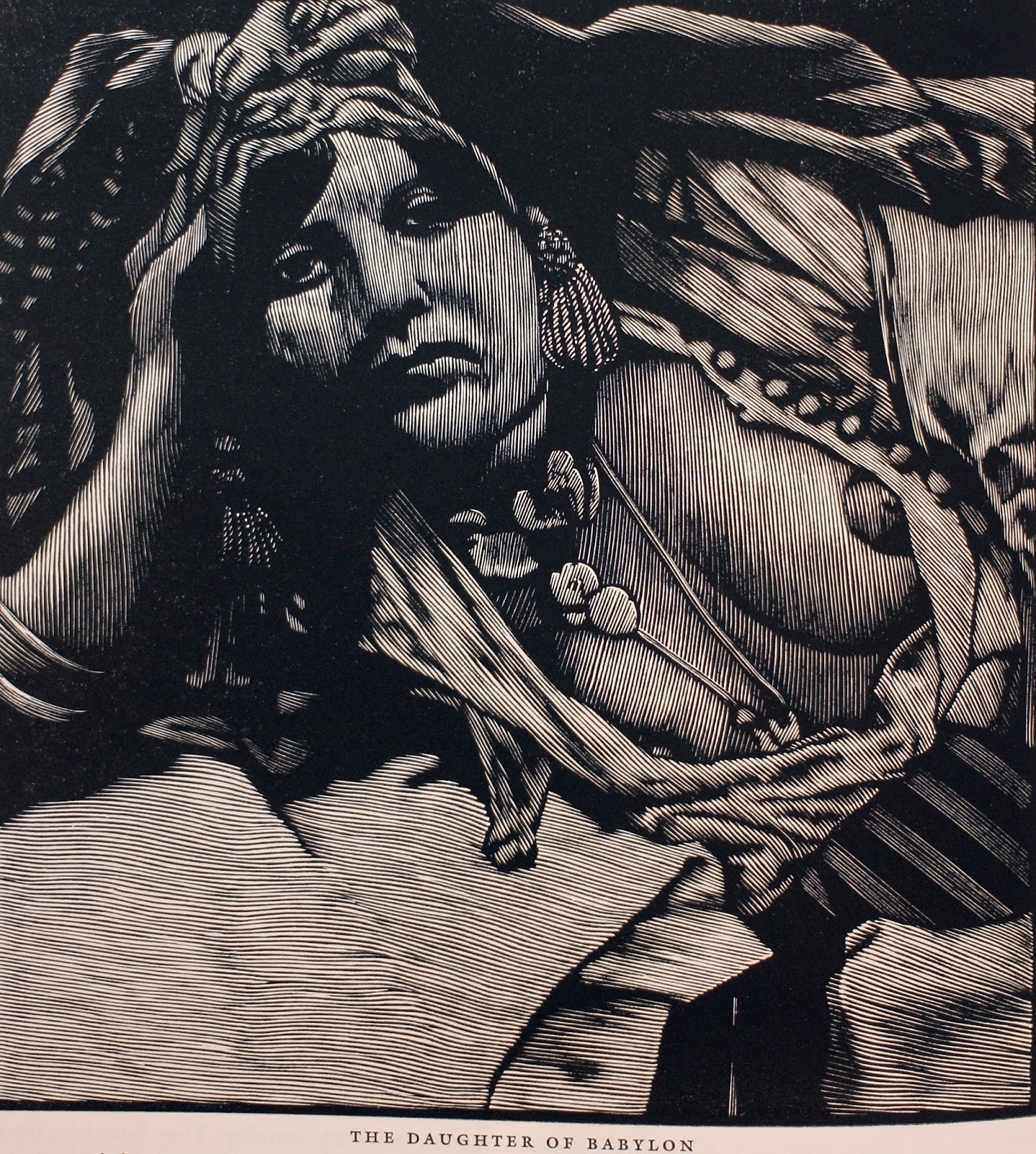 In normal European and American practice, when a book is bound the gathered sections (called “quires”) are sewn onto horizontal strips of some strong material, which are then laced onto the boards (ibid). In the case of the Pennyroyal Caxton Bible, the strips are made of linen tapes and sewn with linen thread”
In normal European and American practice, when a book is bound the gathered sections (called “quires”) are sewn onto horizontal strips of some strong material, which are then laced onto the boards (ibid). In the case of the Pennyroyal Caxton Bible, the strips are made of linen tapes and sewn with linen thread”- A “rubric” is a heading to a chapter or section written or printed in red (ibid). In the Pennyroyal Caxton Bible, the opening of the Hebrew Bible/Old Testament is adorned with a rubric (God), and likewise the New (Christ). The entire Bible closes with a third rubric (Amen).
